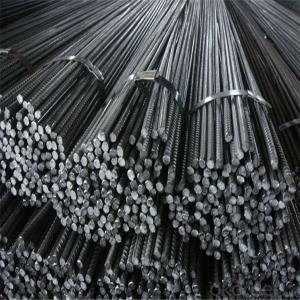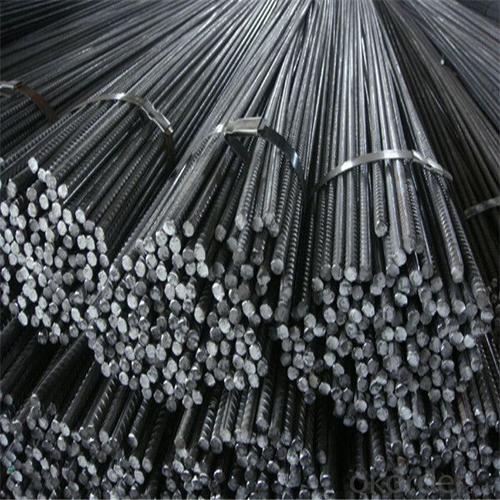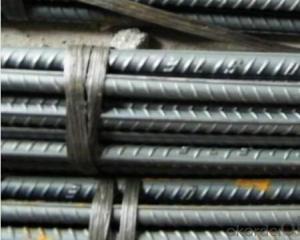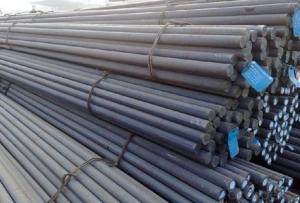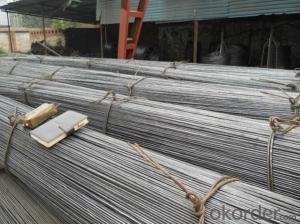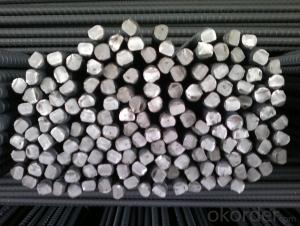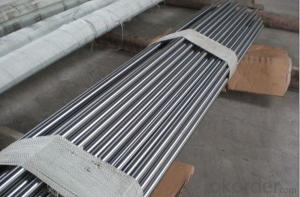HRB500 Deformed Steel Rebar for building
- Loading Port:
- Tianjin
- Payment Terms:
- TT OR LC
- Min Order Qty:
- 100 m.t.
- Supply Capability:
- 18000 m.t./month
OKorder Service Pledge
OKorder Financial Service
You Might Also Like
Specification
Rebar is common steel reinforcing bar, an important component of reinforced concrete and reinforced masonry
structures. It is usually formed from mild steel, and is given ridges for better frictional adhesion to the concrete.
Concrete is a material that is very strong in compression, but virtually without strength in tension. To compensate
for this imbalance in concrete's behavior, rebar is formed into it to carry the tensile loads.
Our Advantage: High quality steel products from 1 class mills in China
Reasonable price
Professionalism of the products
On-time delivery
Complete documents and certificates
Sincere service to meet our clients' requirements
Product Description :
Chemical composition (%): | Steel | C | Si | Mn | P | S | Ceq | ||||
HRB335 |
0.25 |
0.80 |
1.60 |
0.045 |
0.045 | 0.52 | |||||
HRB400 | 0.54 | ||||||||||
HRB500 | 0.55 | ||||||||||
Mechanical properties | Steel | Rel/ MPa | Rm/ MPa | A/ % | Agt/ % | ||||||
≥ | |||||||||||
HRB335 | 335 | 455 | 17 |
7.5 | |||||||
HRB400 | 400 | 540 | 16 | ||||||||
HRB500 | 500 | 630 | 15 | ||||||||
Package: | Standard export packing or as customer's request | ||||||||||
Application: | Construction, building, bridge, road. ect | ||||||||||
Payment terms | 1).100% irrevocable L/C at sight. | ||||||||||
Delivery time | 15-30 days after receipt of L/C or deposit by T/T | ||||||||||
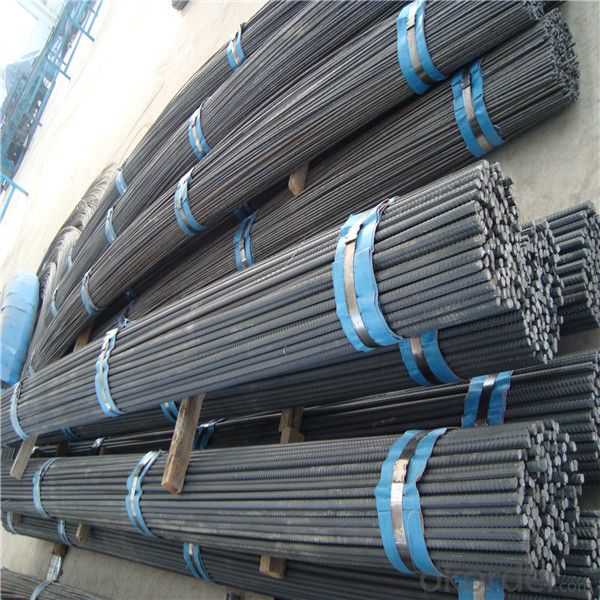
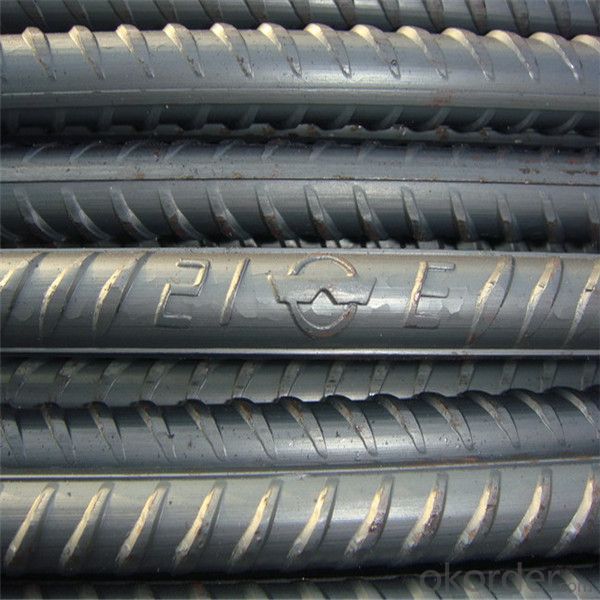
Packing:
In bundles, each bundle weight 3.5 tons. Load by container or by bulk verssel.
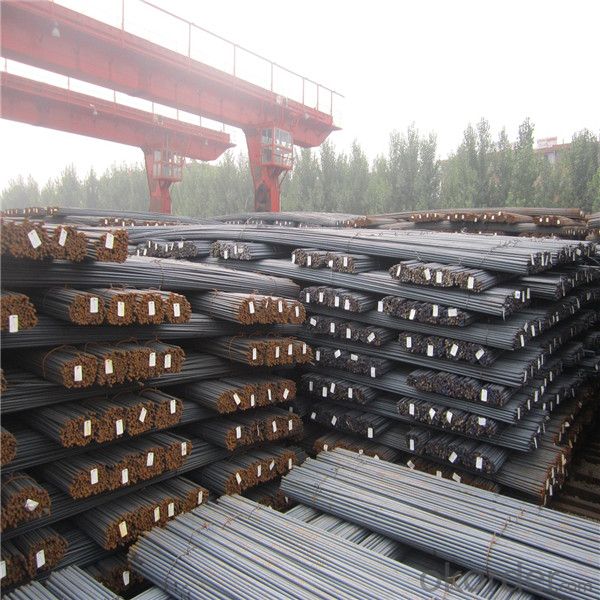

Our service
(1) We cooperate with famous factories with advanced equipment and well trained workers.
(2) We can provide factory price with trading company service.
(3) We continuously work on the improvement of our processes, guaranteeing consistently high standards
of quality to keep none compensation.
(4) We guarantee 24 hours response and 48 hours solution providing service.
(5) We accept small order quantity before formal cooperation.
(6) We deliver the agreed quality at the agreed time, reacting to changes in customer wishes in a flexible way.
(7) Due to our volume and selling power, we have excellent freight rates with shipping lines.
(8) We strive to always be fair and honest in our dealings with customers.
(9) We strive to work together with customers to achieve much more than we can achieve alone.
(10) Through our passion and commitment we aim to be a market leader in all our key markets. To maintain
our position as market leader we must continue to add value in all that we do.
FAQ:
1.Q: What's your MOQ(minimum order quantity)?
A: One full container, mixed acceptable .
2. Q: What's your packing methods?
A: Packed in bundle or bulk ..
3. Q: How can I buy CNBM products in my country?
A:Please send us an inquiry or email ,we will reply to you if there is distributor in your country
4. Q: Can we visit your factory?
A: Warmly welcome. Once we have your schedule, we will arrange the professional sales team to follow up your case.
5. Q: How long does it take to get the product if i place an order?
A:With the process of your requirements,we will pack and deliver in 3-7 days. If it is by sea shipment,it will take 15-45 days depending on different locations
- Q: Thread steel 20*9 one is 2.001T. How many pieces of this one?
- Thread steel 20*9, one is 2.001T, and this one has about 90. Thread steel 20*9, parameter is 20mm in diameter, length is 9m.
- Q: How do steel rebars contribute to the structural soundness of a building?
- Steel rebars contribute to the structural soundness of a building by providing reinforcement to concrete structures. By adding strength and stability to the concrete, rebars help prevent cracks and structural failures, especially during heavy loads, seismic activities, or extreme weather conditions. They enhance the tensile strength of concrete, which is otherwise weak in tension, and allow it to withstand greater forces, thereby increasing the overall durability and longevity of the building.
- Q: What are the guidelines for storing steel rebars on a construction site?
- To ensure safety and maintain the quality of steel rebars stored on a construction site, it is important to follow several guidelines. Here are some key recommendations: 1. Choose a designated area on the construction site that is flat, clean, and well-drained for storing the rebars. Avoid areas that are prone to flooding or excessive moisture. 2. Elevate the rebars above the ground using wooden or concrete blocks to prevent direct contact with soil or water. This will help prevent rusting and corrosion. 3. Stack the rebars in a stable manner, aligning them vertically and horizontally to maintain their shape and prevent bending or warping. Use spacers or crates between layers to ensure proper spacing and prevent entanglement. 4. Protect the rebars from the elements by covering them with a waterproof tarp or plastic sheet. This will shield them from rain, snow, or excessive sunlight and prevent rusting and degradation. 5. Store different sizes and types of rebars separately to avoid mixing or confusion during construction. Clearly label and mark each stack to identify the type, size, and grade of the rebars. 6. Organize the rebars in a logical manner to provide easy access for construction workers. Place smaller rebars on top for easy retrieval and avoid storing heavier rebars on top of lighter ones to prevent damage. 7. Take safety precautions by maintaining a safe distance between the rebars and any heavy machinery or equipment to minimize the risk of accidents. Secure the rebars properly to prevent them from falling or causing injury. 8. Regularly inspect the rebars for any signs of damage, rust, or corrosion. Replace or repair any compromised rebars to avoid compromising the structural integrity of the construction project. By following these guidelines, construction sites can ensure the proper storage of steel rebars, promoting safety, efficiency, and the longevity of the rebars.
- Q: What is the effect of steel rebars on the thermal conductivity of concrete?
- The thermal conductivity of concrete is greatly affected by the presence of steel rebars. Steel, being an excellent conductor of heat, allows thermal energy to easily pass through its structure. When steel rebars are embedded in concrete, they create a pathway for heat to flow within the material. The thermal conductivity of steel rebars can have both positive and negative consequences on the overall thermal performance of concrete structures. On one hand, it can improve heat transfer within the structure, enabling more efficient heating or cooling. This is advantageous in scenarios where thermal conductivity is desired, such as in building designs that require active temperature control. However, the presence of steel rebars can also result in increased heat loss or gain based on the environmental conditions. When there is a temperature difference between the inside and outside of the structure, the steel rebars can act as thermal bridges, making it easier for heat to escape or enter the building. As a consequence, higher energy consumption is needed for heating or cooling purposes. To address these potential issues, additional insulation measures can be implemented to decrease the thermal bridging effect caused by steel rebars. This may involve using thermal break materials or coatings, or adopting insulation techniques like adding foam or other insulating materials around the rebars. In conclusion, steel rebars significantly influence the thermal conductivity of concrete. While they can enhance heat transfer within the structure, they can also lead to increased heat loss or gain. Appropriate insulation measures should be taken into account to minimize the negative effects of thermal bridging caused by steel rebars.
- Q: How are steel rebars used in industrial buildings?
- Steel rebars are used in industrial buildings to reinforce concrete structures and enhance their strength and durability. They are typically embedded within the concrete to provide additional support and prevent cracking or collapse under heavy loads or seismic activity. Rebars help to distribute the load evenly throughout the structure and ensure its structural integrity, making them vital components in the construction of industrial buildings.
- Q: How are steel rebars protected against mechanical damage during construction?
- Steel rebars are protected against mechanical damage during construction through various methods. One common method is by using protective covers or sleeves made of materials such as plastic or rubber. These covers are placed over the rebars to create a physical barrier, preventing them from being directly exposed to potential sources of damage, such as heavy machinery or construction equipment. Another method of protection is by using rebar caps or safety caps. These caps are designed to fit over the ends of the rebars, providing an extra layer of protection against mechanical damage. They help to prevent the rebars from being bent, crushed, or damaged by accidental impacts. In addition to physical protection, rebars can also be protected against mechanical damage through proper storage and handling. It is important to store rebars in a designated area that is free from any potential sources of damage, such as sharp objects or heavy materials. When handling rebars, workers should use proper lifting techniques and avoid dragging them on rough surfaces, as this can cause scratches or other forms of damage. Furthermore, during construction, rebars are often inspected regularly to ensure that they are not damaged or compromised. Any rebars that show signs of damage, such as bends, cracks, or deformations, are typically replaced to maintain the structural integrity of the construction project. By implementing these protective measures, steel rebars can be safeguarded against mechanical damage during construction, ensuring their effectiveness in providing strength and reinforcement to the structures they are used in.
- Q: Can steel rebars be used in historical building restoration?
- Yes, steel rebars can be used in historical building restoration. Rebars are commonly used in construction to reinforce concrete structures and provide additional strength and durability. When it comes to historical building restoration, the goal is to preserve the original character and aesthetics of the structure while ensuring its structural integrity. Steel rebars can be carefully integrated into the restoration process to strengthen weak areas or replace deteriorated or damaged sections. The use of rebars allows for a more stable and long-lasting structure, ensuring the building's longevity for future generations. However, it is important to ensure that the use of steel rebars in historical building restoration is done in a way that respects the historical significance of the structure. The integration of rebars should be done discreetly, ensuring they do not compromise the building's original appearance or architectural features. Additionally, any restoration work on historical buildings should adhere to strict preservation guidelines and be carried out by skilled professionals with expertise in historical preservation. This ensures that the restoration process maintains the historical integrity of the building while incorporating necessary structural reinforcements, such as steel rebars.
- Q: Why is round bar more expensive than thread steel?
- Threaded steel should be used in the construction field, there are generally two, three grade steel, grade HRB335, HRB400 also has four grades, HRB500 thread steel.
- Q: How do steel rebars prevent cracks in concrete?
- Steel rebars prevent cracks in concrete by providing reinforcement and increasing the tensile strength of the structure. As concrete is strong in compression but weak in tension, the rebars absorb and distribute the tensile forces throughout the concrete, preventing it from cracking under stress. The combination of steel rebars and concrete creates a composite material that can withstand bending, flexing, and other external loads, thus enhancing the overall durability and longevity of the structure.
- Q: Can steel rebars be used in architectural or decorative concrete applications?
- Yes, steel rebars can be used in architectural or decorative concrete applications. They provide structural reinforcement and enhance the overall strength and durability of the concrete. Additionally, when properly designed and installed, steel rebars can be concealed or incorporated into the design, making them suitable for various aesthetic purposes in architectural or decorative concrete projects.
Send your message to us
HRB500 Deformed Steel Rebar for building
- Loading Port:
- Tianjin
- Payment Terms:
- TT OR LC
- Min Order Qty:
- 100 m.t.
- Supply Capability:
- 18000 m.t./month
OKorder Service Pledge
OKorder Financial Service
Similar products
Hot products
Hot Searches
Related keywords
